Producing water from thin air
by: Ecofriend, 2011-05-02 05:47:34 UTC
Ezeba:

What’s happening right now?
About 70 percent of the earth is covered with water. But 97 percent of this water is in seas and oceans. This water is saline in nature and is not fit for human consumption. The amount of freshwater on Earth is very less. It is only 3 percent. Almost 99 percent of this freshwater is stored in ice caps, glaciers and very deep in water tables. Humans have access on just 1 percent of it.
Many countries are water stressed and about one-third of world’s population lives in these countries. As water is not readily accessible for humans in some parts of the world, so they use contaminated water which is the major cause of waterborne diseases. Waterborne diseases are leading cause of death in children under five. Use of such contaminated water can cause serious illness and can be fatal sometimes.
Unsafe drinking water, poor hygiene and inadequate sanitation are the leading cause of waterborne diseases. China 2nd National Water Assessment reports that 35.6 percent of drinkable water in china is not fit for drinking purpose. According to United Nations, there will be serious problem of water shortage by the year 2025 and about 66 percent of population will have to deal with it.
About 1.1 billion people living on the globe already suffer from a serious lack of fresh water. By 2025, this number will increase to three billion – over 40 percent of the entire population.
Trends
Technion-Israel Institute of Technology has produced water from thin air

Technion-Israel Institute of Technology has come up with a very good concept. Two architects worked on this and invented a low-tech way of collecting dew and turning it into fresh water. This is the ultimate way to collect unlimited supply of water even in most polluted areas. About 48 liters of fresh water can be extracted from air in a single day from one unit of 315 sq ft. This invention won an international competition recently.
Water from thin air - EWA Technologies Group

A technology is developed by an Israeli company, EWA (Extraction of Water from Air) that proposes to extract water from air, by using little energy. The application of Solid desiccant technology is applied to get energy efficient water harvesting from air. It has special condenser that can reuse 85 percent of energy input and saves energy. This system is compatible with various Renewable sources such as Bio fuel, Solar power, heat from organic matter etc.
Clean Water Appears Out of Thin Air with EcoloBlue

Atmospheric water generators (AWG) are used to get water from the air. These EcoloBlue AWGs provides about 7 gallons of clean in a day. As these AWGs work best at humidity of 50 percent, so they can reduce the effects of hot and humid climate. But these are not effective in winters when humidity is less. These units produce water even when humidity is 30 percent.
Watermill sucks fresh water out of air

There is another device called Element Four’s Watermill which not only generates but also filters the water and makes it clean and fit for consumption. In ideal conditions, this device can generate 3.2 gallons of clear water. This is very cost-effective. The cost is 11 cent per gallon. You get fresh drinking water at very reasonable price.
DropNet Fog Collector provides potable water from thin air and mist

A student named Imke Hoehler from Germany’s Muthesius Academy of Fine Arts and Design comes up with something that is unique. He generated drinking water from Mist and Thin Air. By this method, dubbed the DropNet, about 20 liters of potable water can be harvested in a day.
The Fog Collectors: Harvesting Water From Thin Air

A Canadian non-profit named Fog Quest harvested potable water not only for drinking purpose but also for irrigation and reforestation by using modern fog collector. It can be used even in deserts and areas that receive less than 1mm rain. Fog collectors are like volleyball nets between two poles. These nets are made of polypropylene that can capture tiny water droplets. The tiny droplets of fog cling to net, when cluster is formed it falls into gutter and then to tank.
MIT fog collector provides clean water from thin air

Many water starved countries are helped by MIT team by improving systems and helping them in harvesting water from fog. Water is collected on bumpy backs by Namib Beetle, and then it is rolled into its mouth. Shreerang Chhatre from MIT says that efficiency of previous system is improved by his collector.
The concept
In this technology, the water extracted from humid pressurized air is drinkable water. Water vapors are condensed and cooled below the dew point, either by pressurizing or by exposing the air to desiccants. The rate of water production depends on various factors such as humidity, volume of air, ambient temperature etc. The air temperature is reduced by system which reduces the capacity of air to carry water vapor.
The advantages
Water from thin air is similar to rain water. Various eco friendly methods of water generation are available in markets. The water generated like this is renewable source. So, using the aforementioned methods, freshwater could be made available everywhere in the world. The technologies not only creates freshwater but also provides air conditioning, air purification and humidification. Water generators can be placed in outdoors for maximum production of water.
The impact
About 3.4 quadrillion gallons water is there in atmosphere, i.e. 3100 cubic miles of water at one time. But it is in humid form, so researchers have invented such technologies through which fresh water can be easily harvested from air in any part of the world. This can provide fresh drinking water to zillions dying for it.


 Better Place Coming to China
Better Place Coming to China
by: Eco Geek Latest, 2011-05-02 18:15:25 UTC

Better Place has entered into an agreement with Chinese utility China Southern Power Grid to bring their battery swap stations to the Asian country.
The first phase of the partnership will bring a battery swap station and an education center to city of Guangzhou by the end of the year. By that time, more details of larger infrastructure projects between Better Place and the utility will be formalized and China will be well on its way to a booming EV infrastructure.
The State Grid Corporation of China only recently declared that it would like to see 2,300 battery swap stations in the country by 2015.
Better Place founder Shai Aggasi sees this partnership leading to a shift in Chinese EV manufacturing to switchable-battery cars for both the Chinese and international markets, which will mean more demand for Better Place's technology globally -- a true win-win for both parties involved.
via Autoblog Green

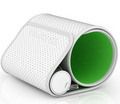
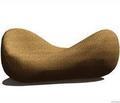
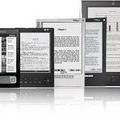

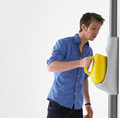
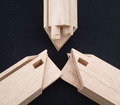

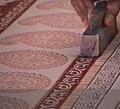
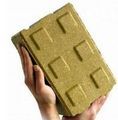
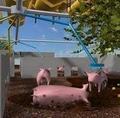
Comments by our Users
Be the first to write a comment for this item.